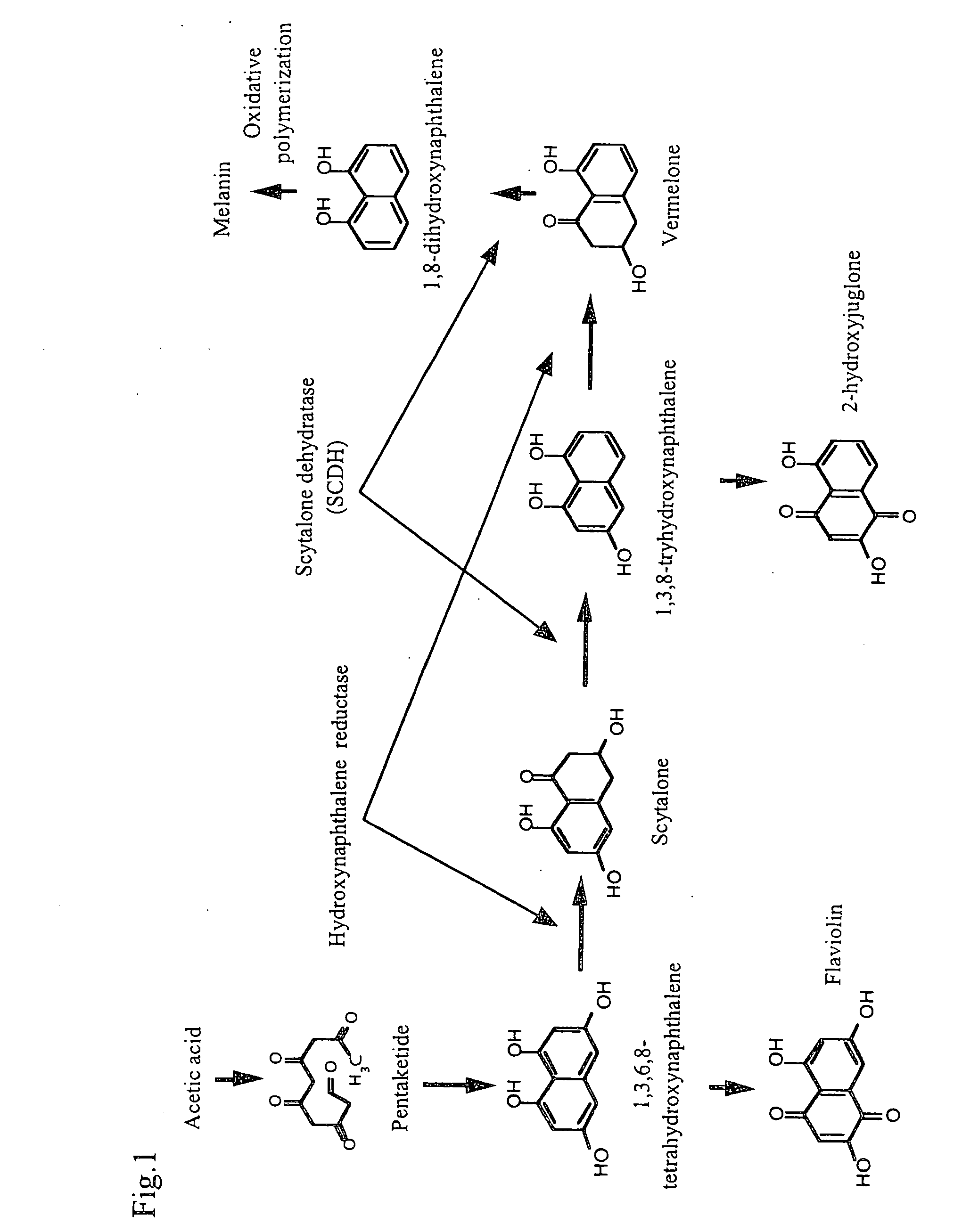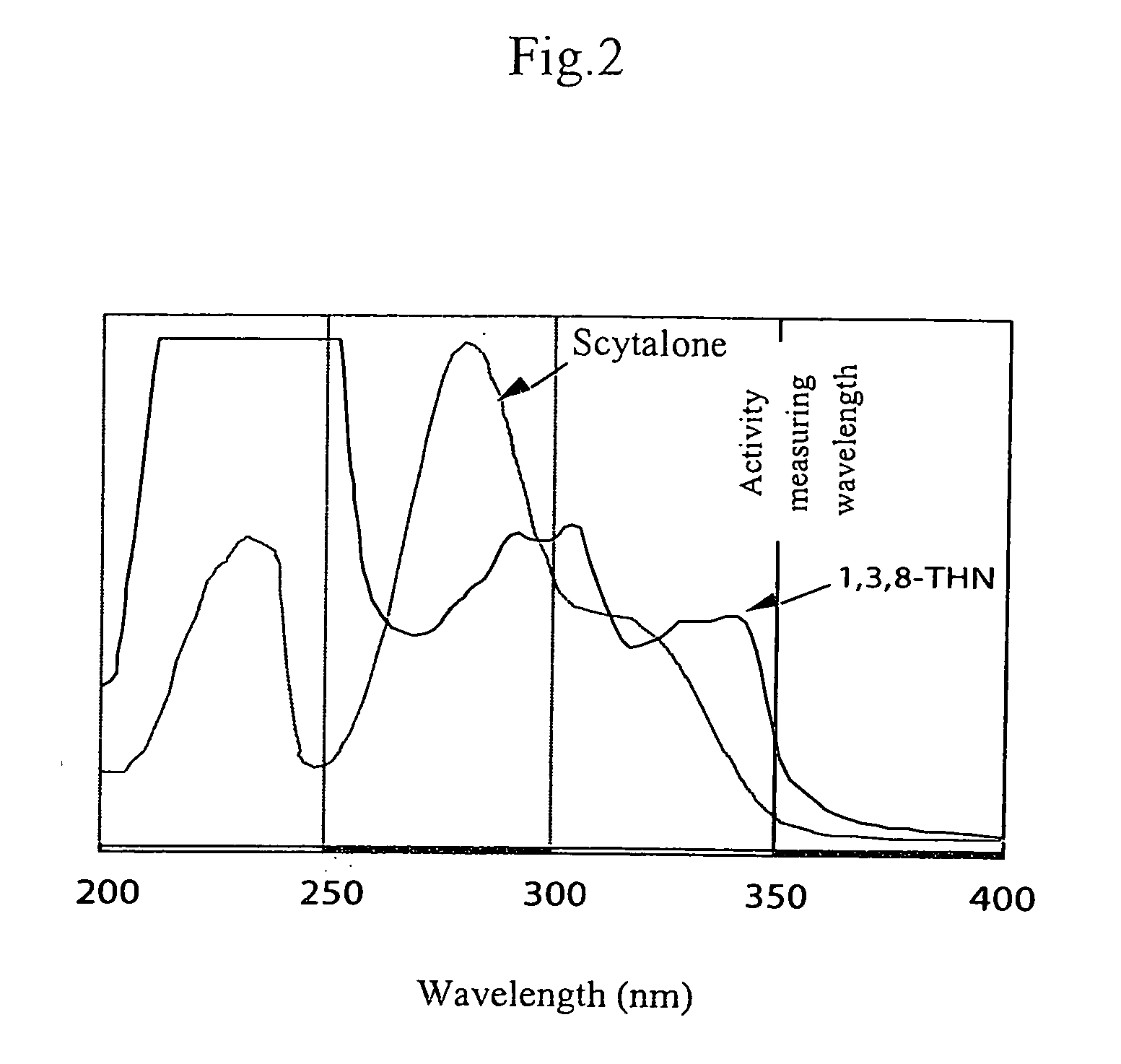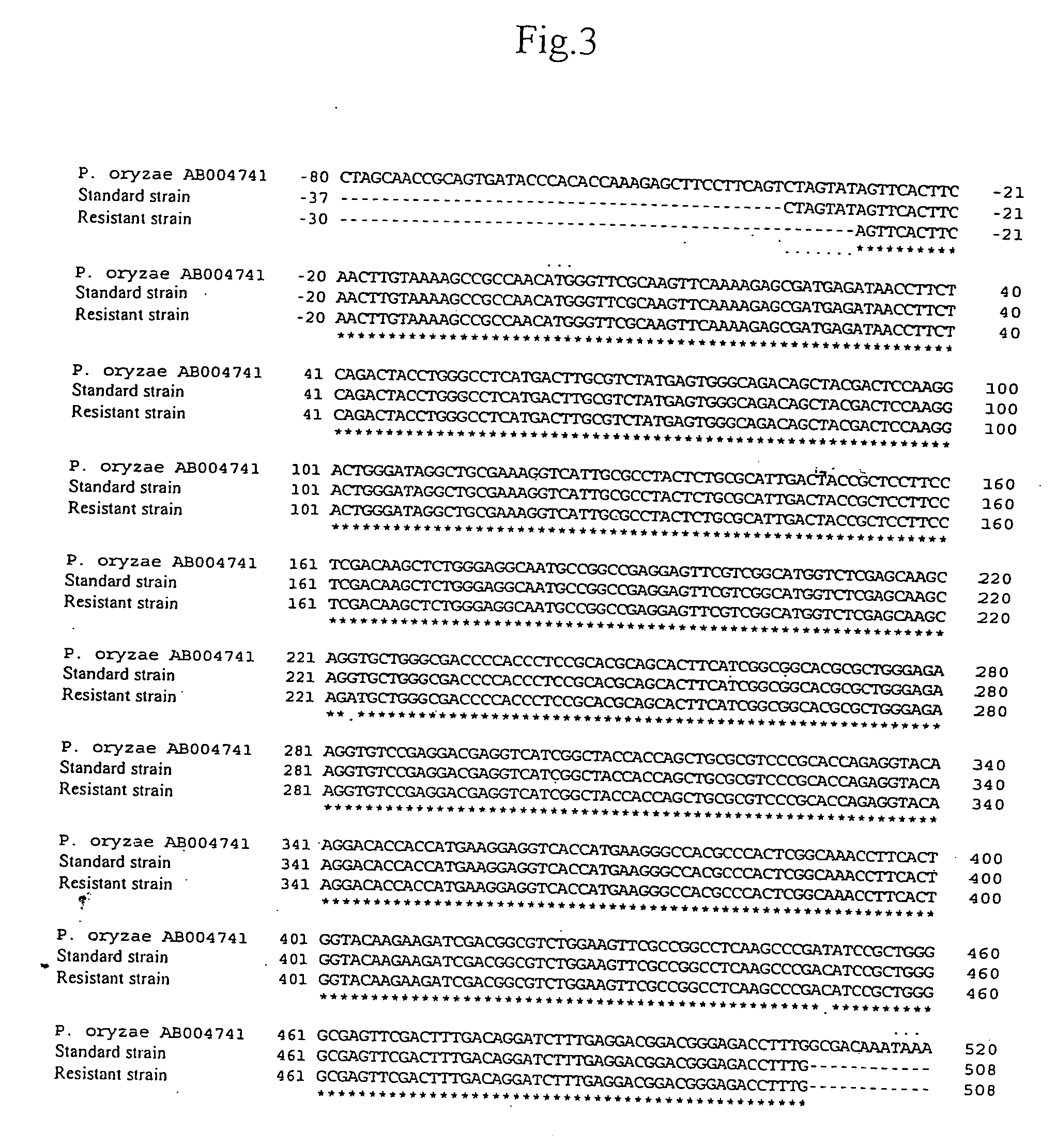Scytalone dehydrogenase gene showing tolerance to agricultural pesticide
- Summary
- Abstract
- Description
- Claims
- Application Information
AI Technical Summary
Benefits of technology
Problems solved by technology
Method used
Image
Examples
example 1
[0068] According to this example, first, filamentous mycelia used for extracting SCDH enzymes were prepared. Spore solutions (105 / ml) containing a rice blast fungus (Pyricularia oryzae) as a standard (wild-type) strain and carpropamid-resistant rice blast fungi (resistant strains A and B) were individually added to 200 ml YGPCa liquid culture solutions (pH 6.5) each containing yeast extract (5 g), glucose (20 g), KH2PO4 (0.5 g), Na2HPO4 (0.5 g) and CaCl2 (0.5 mg), and were grown at 27° C. for 4 to 5 days.
[0069] After the cultivation, the filamentous mycelia were collected through centrifugation of the culture solutions and washed with distilled water. Cold acetone, which has five times the weight of the mycelia, was added, and the results were homogenized with a Waring blender. The homogenates were centrifuged (15,000×g, 20 min.). The precipitates were dried at 4° C. to obtain acetone powders, which were stored at −85° C.
[0070] The obtained acetone powders were used to prepare cru...
example 2
[0073] In this example, first, filamentous mycelia were prepared as described below for extracting genome DNA and mRNA from rice blast fungi. First, a standard (wild-type) strain and carpropamid-resistant rice blast fungi (resistant strains A and B) were individually cultured on oatmeal media. After the cultivation, the mycelium parts were each added to 20 ml potato-dextrose (PD) liquid media and pre-cultured at 28° C. for 3 days. Since the pre-cultured filamentous mycelia form themselves into lumps, they were homogenized with a sterilized Waring blender and 1 ml of each sample was cultured in a 20 ml PD liquid medium for another 3-5 days. The mycelia were separated by filtration under reduced pressure and washed with distilled water. These mycelia were ground in liquid nitrogen using a mortar. The ground powders were stored at −85° C. Thus, powders from the standard (wild-type) strain, the resistant strain A and the resistant strain B were obtained.
[0074] For extracting total RNA ...
example 3
[0083] A simple assay of mutation of valine (Val) into methionine (Met) at position 75 (hereinafter, referred to as “Val75Met mutation”) in the SCDH enzymes from rice blast fungi was considered.
[0084] A rice blast fungus grown on an oatmeal medium (5% oatmeal 2% sucrose and 1.5% agar) at 28° C. was pricked with a toothpick and transferred into a 1.5 μl microtube. The microtube was covered with a lid and irradiated with microwave in a microwave oven (600 W) for 5-7 minutes. Due to this treatment, the cell wall of the fungus was ruptured.
[0085] Next, 50 μl TE buffer (pH 8.0) was added to the microtube, and the resultant was thoroughly agitated and centrifuged at 14,000 rpm for 10 minutes. The supernatant containing free genome DNA was transferred to another microtube and stored at −20° C. One to five μl of the supernatant was mixed with 1 μl each of Primer 4 (5′-ATGGGTTCGCAAGTTCAAAAG-3′, 25 pmol / μl), Primer 5 (5′-GTGGCCCTTCATGGTGACCTCCT-3′, 25 pmol / μl) and PCR beads (Amersham Biosci...
PUM
| Property | Measurement | Unit |
|---|---|---|
| Sensitivity | aaaaa | aaaaa |
Abstract
Description
Claims
Application Information
 Login to View More
Login to View More - R&D
- Intellectual Property
- Life Sciences
- Materials
- Tech Scout
- Unparalleled Data Quality
- Higher Quality Content
- 60% Fewer Hallucinations
Browse by: Latest US Patents, China's latest patents, Technical Efficacy Thesaurus, Application Domain, Technology Topic, Popular Technical Reports.
© 2025 PatSnap. All rights reserved.Legal|Privacy policy|Modern Slavery Act Transparency Statement|Sitemap|About US| Contact US: help@patsnap.com



